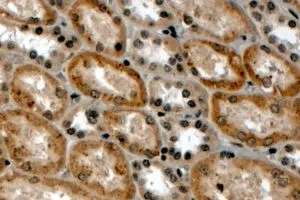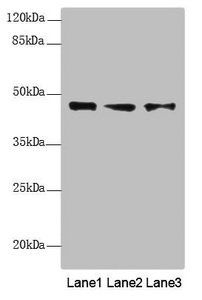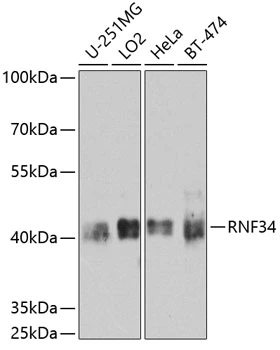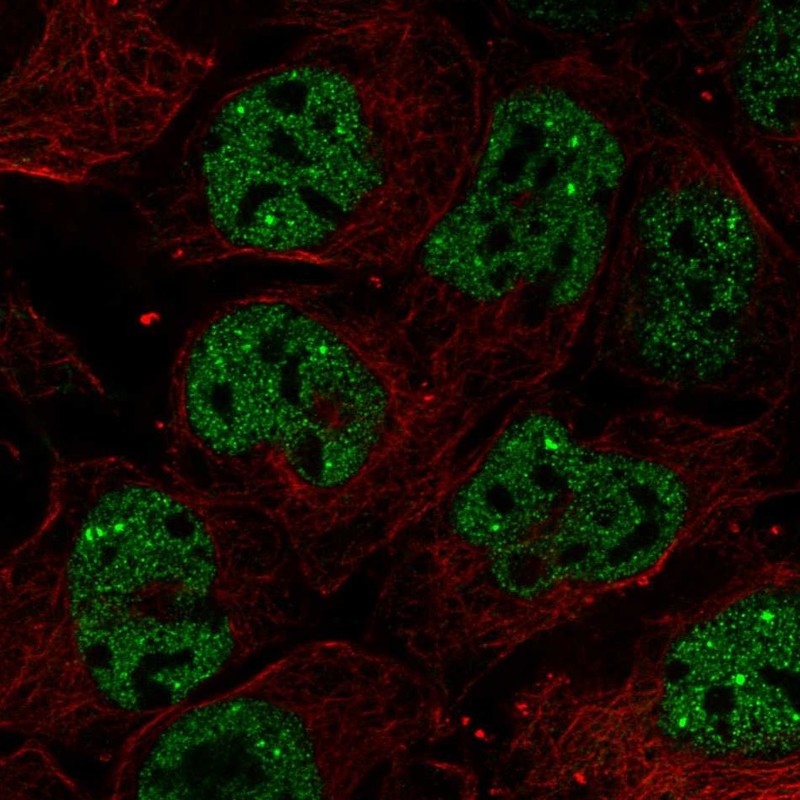
IHC-P analysis of human kidney using GTX89815 RNF34 antibody, N-term. Antigen retrieval : Tris/EDTA buffer pH 9 Dilution : 4microg/ml
RNF34 antibody, N-term
GTX89815
ApplicationsImmunoHistoChemistry, ImmunoHistoChemistry Paraffin
Product group Antibodies
TargetRNF34
Overview
- SupplierGeneTex
- Product NameRNF34 antibody, N-term
- Delivery Days Customer7
- Application Supplier NoteIHC-P: 4-8microg/ml. *Optimal dilutions/concentrations should be determined by the researcher.Not tested in other applications.
- ApplicationsImmunoHistoChemistry, ImmunoHistoChemistry Paraffin
- CertificationResearch Use Only
- ClonalityPolyclonal
- Concentration0.50 mg/ml
- ConjugateUnconjugated
- Gene ID80196
- Target nameRNF34
- Target descriptionring finger protein 34
- Target synonymsCARP-1, CARP1, RFI, RIF, RIFF, hRFI, E3 ubiquitin-protein ligase RNF34, FYVE-RING finger protein MOMO, RING finger protein RIFF, RING-type E3 ubiquitin transferase RNF34, caspase regulator CARP1, caspases-8 and -10-associated RING finger protein 1, human RING finger homologous to inhibitor of apoptosis protein, ring finger protein 34, E3 ubiquitin protein ligase
- HostGoat
- IsotypeIgG
- Protein IDQ969K3
- Protein NameE3 ubiquitin-protein ligase RNF34
- Scientific DescriptionThe protein encoded by this gene contains a RINF finger, a motif known to be involved in protein-protein and protein-DNA interactions. This protein interacts with DNAJA3/hTid-1, which is a DnaJ protein reported to function as a modulator of apoptosis. Overexpression of this gene in Hela cells was shown to confer the resistance to TNF-alpha induced apoptosis, suggesting an anti-apoptotic function of this protein. This protein can be cleaved by caspase-3 during the induction of apoptosis. This protein also targets p53 and phospho-p53 for degradation. Alternatively splicing results in multiple transcript variants encoding distinct isoforms. [provided by RefSeq, Feb 2012]
- Storage Instruction-20°C or -80°C,2°C to 8°C
- UNSPSC12352203







